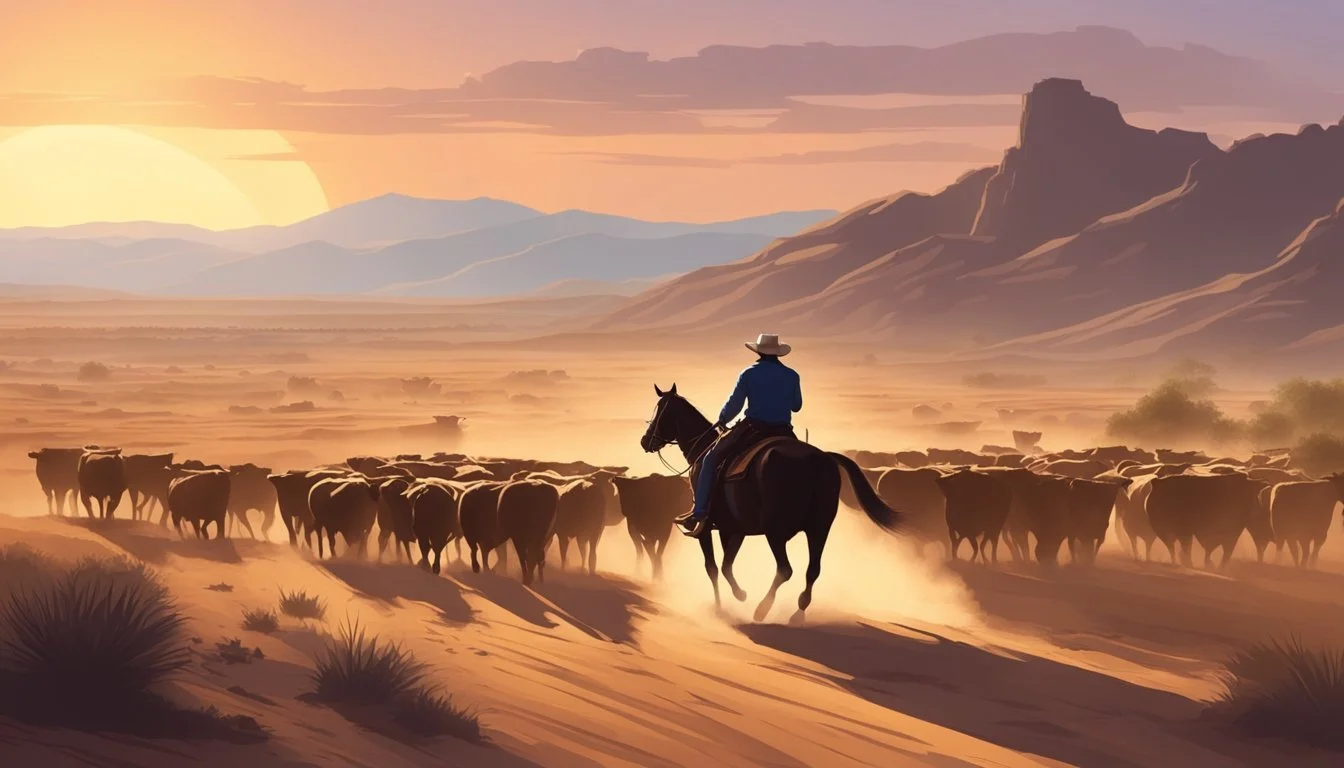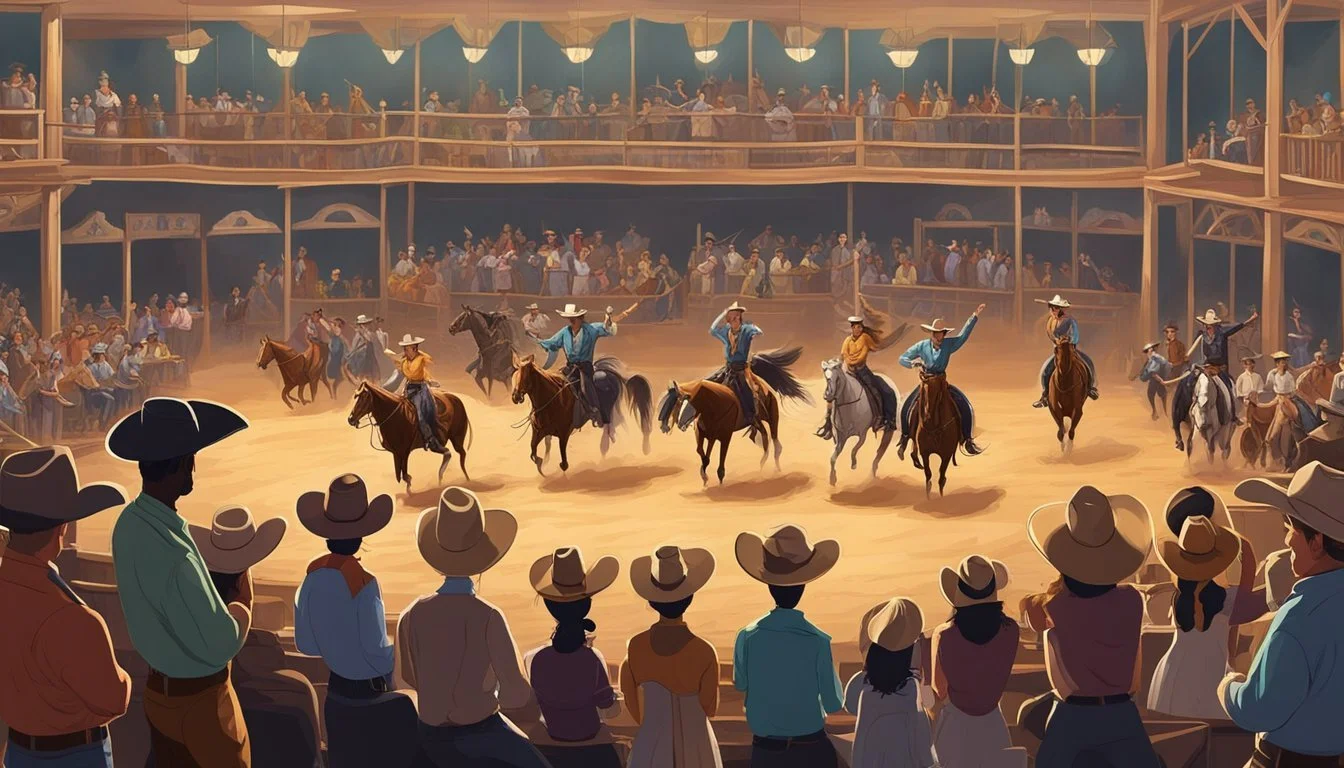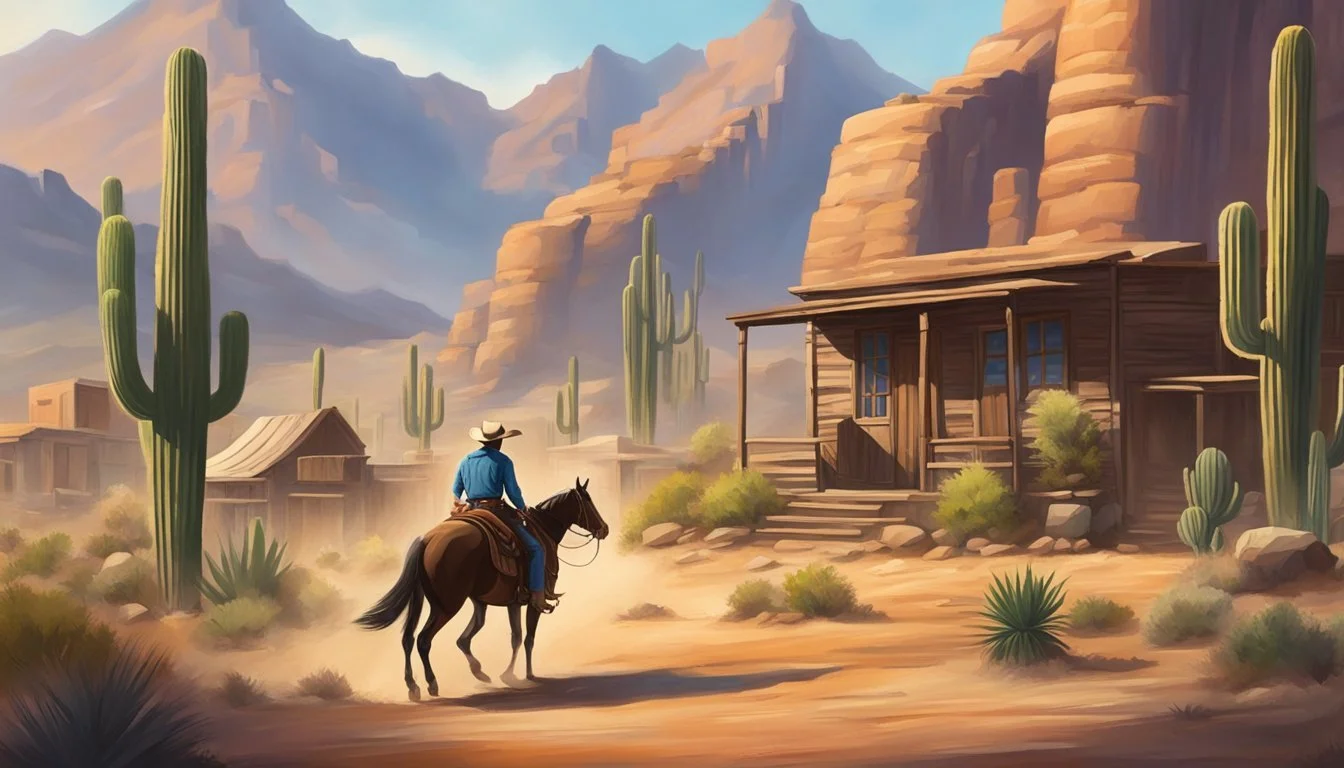The Texas Cowboy's Guide to Premier Western Themed Performances Nationwide
Texas has long stood as a bastion of cowboy culture, an iconic symbol of the American West. As the state where cattle drives flourished and the legend of the cowboy was born and burnished, Texas is the ultimate destination for anyone seeking to experience the authentic vestiges of the Old West. Western themed performances across the state deliver a captivating portrayal of cowboy life, offering visitors a chance to step back in time and witness the embodiment of the Western spirit.
These performances, ranging from high-energy rodeos to detailed reenactments, capture the essence of a past era. In places like Bandera, known as the "Cowboy Capital of the World," one can view dramatic showdowns staged by the Bandera Cattle Company Gunfighters, providing tourists with a taste of frontier justice and bravado. Such shows are not mere entertainment; they are a celebration of history, a tip of the hat to the men and women who shaped the Texas frontier.
To truly bask in the Texas cowboy legacy, there are numerous ranches and stockyards where the cowboy life is not a mere performance but a day-to-day reality. Visitors may find themselves exploring a working ranch, such as the historic Dixie Dude Ranch, where the cowboy culture thrives, and the Western hospitality is as palpable as the dusty trails once trod by cattle and those who herded them. Through these immersive experiences, the legend of the Texas cowboy continues to be honored and preserved.
History of the Texas Cowboy
The Texas cowboy is an iconic symbol with roots that date back to Spanish influence and has asserted a significant impact on American culture through lawmen and outlaws alike, the cattle industry, and cowboy-themed literature.
Early Influences and Origins
The vaquero, the precursor to the cowboy, was integral to the establishment of ranching in Texas. Spanish settlers brought their herding skills and cattle ranching techniques to the New World during the colonial era. Skilled in horsemanship and herding, vaqueros set the foundation for the cowboy heritage long before Texas became a US state.
Evolution of Cowboy Traditions
Post Civil War, the cattle industry boomed in Texas, necessitating a demand for skilled cowhands to manage herds. Cowboys drove vast numbers of cattle along routes like the Chisholm Trail. The open range system allowed cattle to freely graze until the innovation of barbed wire fencing, while the annual roundup was essential for keeping track of cattle owned by different ranchers.
Legends and Outlaws
Outlaws and gunslingers such as Jesse James and Billy the Kid became intertwined with the cowboy legend, often romanticized in dime novels and later in film. Meanwhile, lawmen and Texas Rangers embodied the cowboy's counterpart on the side of the law, contributing to the complex tapestry of the western image.
Cultural Impact and Literature
Black cowboys played a significant role yet were often underrepresented in popular narratives. The cowboy's story captured the public's imagination, celebrated in cowboy songs and chronicled in literature by authors like Owen Wister. Their portrayal contributed to a body of cowboy literature that helped cement the lasting western image of the Texas cowboy.
Cowboy Lifestyle and Activities
The quintessential cowboy lifestyle is steeped in the traditions of ranching and rodeo life, honing skills that have been passed down for generations. This lifestyle encompasses the day-to-day activities and the distinctive attire that are emblematic of the cowboy way of life.
Ranching and Rodeo Life
Working on a cattle ranch involves a variety of demanding tasks essential for the maintenance of livestock. Cowboys spend their days herding and driving cattle, often on horseback, to ensure the animals' well-being and oversee their grazing patterns. At times, the job requires moving livestock across vast expanses of land, a process that demands a deep understanding of orientation and terrain.
Rodeos are competitive events that showcase the skills required in ranching life. Participants compete in various contests that range from bronc riding, where they must stay mounted on a bucking horse (often a strawberry roan), to calf roping, an event where precision with a lasso is critical.
Skills and Techniques
Horse riding is central to the cowboy lifestyle, where mastering control and speed is paramount. Cowboys often begin training at a young age, developing a connection with their mounts that is based on mutual trust and understanding. Proficiency in horseback riding is crucial for cattle drives, general ranch work, and success in rodeo competitions.
Another key skill is the art of lassoing, which requires precision, timing, and coordination. Cowboys use this technique to catch livestock, particularly during herding and when administering medical treatment or branding.
Cowboy Dress and Gear
Cowboys are easily identifiable by their distinctive attire, designed for both functionality and protection. Essential items include:
Cowboy boots, which are made for the saddle, with a high shaft to protect the legs and a defined heel to prevent slipping through stirrups.
The cowboy hat, typically a wide-brimmed hat made from felt or straw, offers protection against sun and rain.
Item Material Purpose Boots Leather Leg protection Hat Felt or straw Shield from elements
Additional gear such as chaps, gloves, and belts are also tailored to the needs of the cowboy, ensuring safety and comfort during rigorous ranch work and rodeo performances.
Western Themed Performances
Texas cowboy culture is an intricate tapestry woven with riveting performances that pay tribute to the Old West. From silver screen portrayals and heartfelt ballads to live competitive spectacles and written works, these elements capture the essence of cowboy life.
Hollywood's Portrayal
Hollywood has etched the image of the cowboy deep into American culture with films like "Red River Valley" and the TV show "Yellowstone." The singing cowboy emerged as a beloved icon, with stars like Gene Autry singing "Back in the Saddle Again" and "Tumbling Tumbleweeds," marrying the cowboy's rugged life with melodic storytelling.
Iconic Songs and Ballads
The Western soundtrack is replete with iconic songs that evoke the cowboy's spirit. Patsy Montana's "I Want to Be a Cowboy’s Sweetheart" combines the cowpoke's journey with desires of love, while classics like "Home on the Range" and "Cool Water" are synonymous with the wide-open frontier.
Live Shows and Competitions
Live Western-themed competitions keep cowboy traditions alive, with events like the Tejas Rodeo Company offering an authentic experience in San Antonio. Spectators can witness the skillful use of the lasso and other traditions that defined the American cowboy in a dynamic, competitive setting.
Literary Contributions
Western literature immortalizes the cowboy ethos through stories and songs. From the rugged tales of Zane Grey to the curated collection "Cowboy Songs", books serve as vessels preserving the narratives and values of cowboy culture across generations, enlightening readers about life on the range.
Preserving the Cowboy Heritage
The Texas landscape is marked with sites and institutions dedicated to the longevity of cowboy culture, ensuring that the legacy of the Lone Star State's rich western heritage is not forgotten. These places offer a bridge to the past, presenting tangible connections to the rugged lifestyle that defined the American West.
Historical Sites and Trails
Chisholm Trail: This historic trail, which once herded countless longhorn cattle from Texas to Kansas, is preserved through markers, museums, and annual events. Visitors can follow the route to experience a slice of cowboy life, understanding the perils and triumphs of cattle driving.
Goodnight-Loving Trail: A vital path blazed by cattlemen Charles Goodnight and Oliver Loving, it weaves through Texas into Oklahoma. It stands as a testament to the determination and entrepreneurial spirit of cowboys who expanded the cattle industry to new frontiers.
Museums and Educational Centers
The Witte Museum: Located in San Antonio, this institution provides a comprehensive study of natural history and offers exhibits on the cowboy era, ranching, and the native wildlife of Texas such as the longhorn.
King Ranch: Not just a mere ranch, but an iconic institution representing Texas's cowboy heritage. It offers tours that educate visitors on the history of the ranch and the evolution of the cowboy experience.
Cowboy and Rodeo Hall of Fame
Located in various communities, halls of fame celebrate the individuals who have excelled in rodeo sports and contributed significantly to the cowboy culture. Their stories and memorabilia are meticulously preserved, honoring the legacy and enduring spirit of the Texas cowboy.
Contemporary Cowboy Culture
Contemporary cowboy culture honors its rich heritage while evolving to stay relevant in today's society. It manifests in various forms, including modern rodeos, depiction in motion pictures, and its influence on country music.
Modern Rodeos and Events
Modern rodeos are a vibrant example of the cowboy traditions thriving till this day. San Antonio and Fort Worth are hubs for these events, where one can witness a blend of historical cowboy skills and contemporary competitive sports. These events typically feature:
Bull Riding: A test of balance and strength, showcasing courage against powerful bovines.
Barrel Racing: Combining speed and precision, riders navigate a cloverleaf pattern around barrels.
Tie-Down Roping: A display of horsemanship and quick reflexes, where riders chase and tie down a calf.
These events not only celebrate the cowboy's athletic prowess but also bring communities together, keeping the cowboy spirit alive in the modern era.
Wild West in Motion Pictures
Hollywood has played a significant role in shaping the imagery of the cowboy and the Wild West. The film industry often returns to these themes, portraying them through various lenses — from the romanticized singing cowboy to the rugged, solitary figures that navigate the expansive frontier. Notable mentions include:
Classic Westerns: Films that pay homage to the cowboy lifestyle, often emphasizing themes of bravery and frontier justice.
Contemporary Adaptations: Newer films that revisit Wild West tropes with a modern twist, inviting audiences to re-examine the myths and realities of cowboy life.
These portrayals contribute to the cowboy's mythical status and influence how cowboy culture is perceived globally.
Influence on Country Music
Country music remains firmly linked with cowboy culture; themes of love, loss, and the allure of the open road are prevalent. Songs like "Back in the Saddle Again" have become timeless anthems of the cowboy ethos. The genre also evolves, with artists drawing on cowboy imagery and history to create sounds that resonate with a broad audience. Country music serves as a conduit for cowboy culture, telling stories that capture the essence of the cowboy spirit.
This section of the article vividly encapsulates the enduring legacy of cowboy culture as it continues to adapt and thrive in the modern world through various mediums.
Popular Destinations and Experiences
Texas offers an array of authentic Western-themed destinations and experiences for those seeking cowboy culture and American West traditions. The state is rich in history, from the days of the working cattle ranch to the excitement of rodeo.
Western Themed Parks and Rides
As a historic district, it provides visitors with daily cattle drives, a glimpse into the cowboy heritage on the original Chisholm Trail.
Guests can explore the area's shops and restaurants with Western themes after experiencing the cattle drive at 11:30 AM or 4:00 PM.
Pioneer Plaza in Dallas
Home to the world's largest bronze monument representing a cattle drive with 40 longhorn steer and three cowboys.
The nearby historic West End Entertainment District offers an assortment of activities with a Western-flair.
Cowboy Experience Tours
One of the largest ranches in the world, King Ranch offers tours providing insight into the life of cowboy culture and ranch operations.
The ranch is vital in showcasing the legacy of the American West and the evolution of the working cattle ranch.
San Antonio's Cowboy Heritage Tours
These tours delve into the rich cowboy heritage unique to San Antonio, including historic sites and live reenactments of Wild West scenes.
San Antonio provides a blend of cowboy culture with its modern urban environment for a diversified experience.
Hunting and Adventure Activities
Bandera, "Cowboy Capital of the World"
Bandera hosts numerous ranches like the Dixie Dude Ranch known for extended stays with horseback riding, rodeos, and Western hospitality.
Hunting and outdoor adventure activities are integral experiences, with opportunities available on various ranches in the area.
Texas Hill Country Hunting
The Hill Country offers extensive hunting opportunities for game such as deer and exotics, embodying the Wild West spirit.
Professional guided hunts ensure a safe and authentic experience within the rugged Texan landscape.
Conclusion
In Texas, the essence of cowboy culture remains not just in history books, but in the vibrant performances that celebrate the Western image. These theatrical homages allow those fascinated with the lore of the American cowboy to immerse themselves in a world where the spirit of the Wild West continues to thrive.
Best Western Performances in Texas:
Historical Accuracy: They offer a glimpse into cowboy's daily life, revering their skills in herding and horsemanship.
Cultural Significance: Each performance is a testament to the enduring legacy of the cowboy in American culture.
Family-Friendly Entertainment: With a blend of music, drama, and rodeo exhibitions, the performances cater to all ages.
Performance highlights include:
Stockyards Rodeos: Witness the excitement of a live rodeo, showcasing traditional cowboy skills.
Dude Ranches: Opportunities for interactive experiences, such as the famed Dixie Dude Ranch.
Living History Shows: Enactments that bring cowboy tales to life, ensuring the continuation of Western heritage.
Patrons should leave with a deeper respect for the rugged individualism and the rich traditions that define the Texas cowboy. It is the hope that these performances not only entertain but also educate and inspire a reverence for the American West's storied past.






